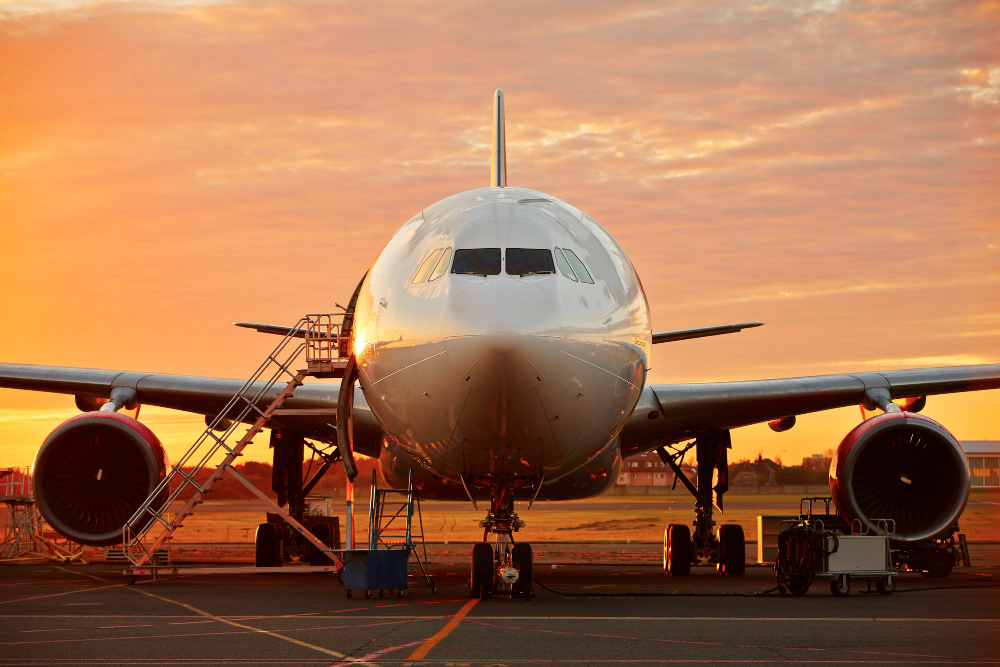
The redesigned Master of Science in Aerospace Engineering programme conferred by TUM will enable students with relevant electronics or mechatronics knowledge to pursue a postgraduate education and career in aerospace engineering.
Now comprising “Mechanics for Aerospace Engineers” module and laboratory modules such as “Structural Modelling lab” and “Aerodynamics Modelling Lab”, these students will acquire the necessary foundational knowledge and skill sets to connect different disciplines to design modern complex aircraft structures, and integrate cyber-physical systems.
Friday, 8 February 2022 – The Technical University of Munich (TUM) Asia, the first and only overseas campus of TUM, is transforming the curriculum of its Master of Science in Aerospace Engineering programme to integrate complementary modules, enabling more mechatronics and electronics students even without prior aerospace engineering background to pursue postgraduate education in aerospace engineering. The redesigned programme aims to attract aspiring students with mechatronics or electronics backgrounds to join the evolving aerospace industry, harnessing their skill sets in robotics and informatics to develop smarter aerospace systems and integrated solutions that deliver and optimise the full spectrum of aircraft performance.Done in close consultation with industry experts and TUM Professors, the Master of Science in Aerospace Engineering now comprises the “Mechanics for Aerospace Engineers” module, designed to equip students with the necessary foundational knowledge in all aspects of aerospace mechanics and enhance their skill set required to create modern complex aircraft structures, and integrate cyber-physical systems.In addition, laboratory modules such as “Structural Modelling Lab” and “Aerodynamic Modelling Lab” will enable students to master multiple skills set through hands-on laboratory exercises and gain a holistic understanding of the complex interplay between specialised domain areas such as aerodynamics, aeroelasticity, structures, vertical flights or rotorcraft.
Complex Interplay Between Aerospace Systems and Aircraft Structures
As aircraft evolve with lighter and more flexible structures, aerospace systems too, are evolving with more sophisticated intelligent systems or cyber-physical systems equipped with powerful computers, and sensors that allow for autonomous flights. The complex interaction between the aircraft with its surrounding particles and the autonomous systems they are operating on presents a new set of unprecedented challenges in which traditional aerospace engineers may not be fully equipped to address. Students with electronics or mechatronics backgrounds would be able to bring their skills and knowledge to the table as transversal aggregators by straddling knowledge from their disciplines to provide custom solutions that can support any component – interior or exterior – while taking into consideration the conditions involved to optimise aircraft performance.
“Universities have traditionally nurtured a single discipline, where degrees are structured across well-defined boundaries by deep diving into a particular specialisation. As technologies advance exponentially in sophistication, we see deep specialisation and cross-fertilisation across silos of disciplines growing in prominence. Graduates are now not only required to specialise in one field but also to be able to unite different disciplines and develop integrated solutions. With the newly revamped aerospace engineering programme, our students will possess skill sets of both disciplines – aerospace engineering and electronics or robotics – that enable them to tackle the complex challenges our world faces today,” said Dr. Markus Wächter, Managing Director of TUM Asia.
Learning Outcome: Mechanics for Aerospace Engineers
The addition of the “Mechanics for Aerospace Engineers” module allows students of different study backgrounds to gain the fundamental knowledge in how aircraft respond to different external forces by studying statics, dynamics, material strength, elasticity, viscoelasticity and fluid dynamics. Students would be able to recognise static load-bearing structures in nature and technology and can extract mechanical models from reality, classify them in terms of analysis and calculate statically determinate as well as statically indeterminate systems using the methods they have learnt. With this module, students would develop the ability to recognise mechanical issues in engineering and solve them independently.
Learning Outcomes: Structural Modelling Lab
The addition of the laboratory course, “Structural Modelling Lab”, aims to demonstrate the use of common Finite Element software tools using examples from the field of aerospace structures. The module aims to provide students with the knowledge and know-how in modelling, analysing and evaluating aeronautical structures with regard to their characteristics.
Learning Outcome: The Aerodynamic Modelling Lab
Introducing fluid dynamics modelling for aerospace applications, the
“Aerodynamic Modelling Lab” module enables students to understand different models and methods available in current flow simulation tools. The set-up and execution of flow simulations as well as the analysis and evaluation of the results are discussed. Upon successful completion, participants will be able to analyse and evaluate aerodynamic properties such as forces and pressure distributions as required in the aircraft design process.
About TUM Asia:
Technical University of Munich (TUM) was founded in 1868 and is the top university in Germany as ranked by QS World Ranking 2023, Times Higher Education 2022, and Shanghai Ranking 2022. Known as one of Europe’s leading technical universities, TUM strives to create sustainable solutions for society through excellence in education and research. 18 TUM professors and alumni have also been awarded the Nobel Prize since 1927. Through TUM’s unwavering commitment to the betterment of society, TUM Asia was set up in 2002 as the first academic branch campus of any German university. TUM Asia offers bachelor’s and master’s degrees conferred by TUM, and other universities in Singapore. Additionally, TUM Asia now offers a new suite of Executive Education courses in areas such as Industrie 4.0 and Precision Engineering.
As the first German academic venture abroad, TUM Asia is supported by the Singapore Government through the Economic Development Board (EDB), and by the German Government through the Federal Ministry of Education and Research and the German Academic Exchange Service (DAAD).
